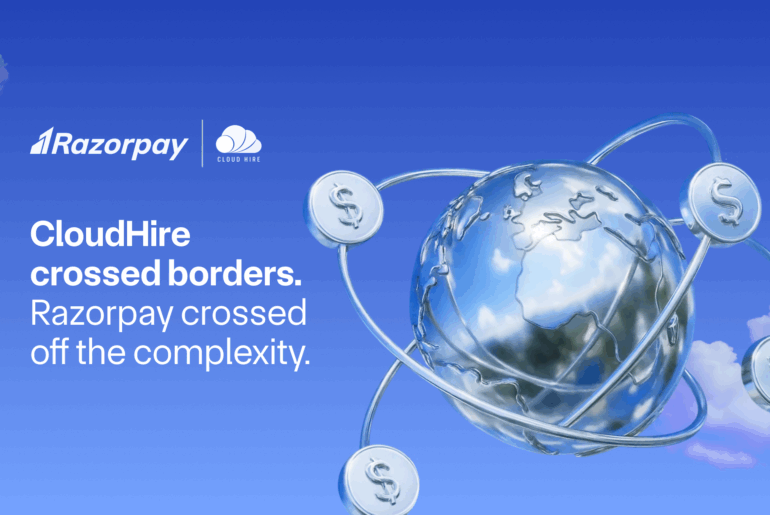Selecting the optimal checkout experience for your e-commerce store can significantly impact your conversion rates and overall sales. One-page checkout vs multi-step checkout is a long-standing debate, with each approach offering unique benefits and drawbacks.
In this article, we’ll delve into the mechanics of these two checkout models and help you determine which one best suits your business needs.
Key Takeaways
One-Page Checkout prioritises speed, with all fields on a single page for fewer clicks.
Multi-Step Checkout emphasises structure, spreading information across distinct steps (shipping, billing, payment).
The impact on conversion rates varies based on product type, customer journey, and target audience.
Razorpay’s Magic Checkout balances speed and trust with pre-filled details and smart optimisation.
What is a One-Page Checkout?
A one-page checkout condenses the entire purchase process into a single webpage, allowing customers to enter their shipping information, billing details, and payment preferences on a single screen without navigating multiple pages. This streamlined approach aims to minimise distractions and reduce the time and effort required to complete a purchase. Typically, the customer adds items to their cart, proceeds to checkout, fills in all required fields such as shipping address, billing information, and payment details on the same page, reviews their order, and finally submits it for processing.
Here are some key features of a one-page checkout:
- All required fields, such as shipping address, billing information, and payment details, are displayed on a single page.
- Customers can complete their purchase with just a few clicks, making the process quick and efficient.
- This model is particularly well-suited for mobile-first users, as it reduces the need for navigation between multiple pages on smaller screens.
- One-page checkouts are ideal for low-involvement, impulse purchases where customers are less likely to second-guess their decisions.
Did You Know?
Globally, 84% shoppers prefer one-click checkout when choosing where to shop, while18% shoppers choose retailers based on the availability of that option.
What is a Multi-Step Checkout?
A multi-step checkout divides the purchase process into separate stages, each on its own page. Typically, it begins with a Shopping Cart Review, where customers can check their selected items, apply coupons, or modify quantities. Next comes the Shipping Information stage, where they provide their address and choose a delivery method. This is followed by the Billing Information step, where customers enter billing details and select a payment option. Finally, in the Order Confirmation stage, customers review the complete order, agree to the terms and conditions, and submit the purchase.
Key features of a multi-step checkout include:
- The process is broken down into clearly defined stages, such as shipping, billing, and payment.
- By presenting information in smaller, more digestible chunks, multi-step checkouts can reduce cognitive load for customers.
- The structured flow provides a guided experience, which can be particularly beneficial for high-value or complex purchases.
- Multi-step checkouts allow for more opportunities to capture customer data and offer targeted upsells or cross-sells.
Related Guide :Multi-Step vs. Single-Page Checkout
One-Page vs Multi-Step Checkout: A Comparison
When deciding between one-page checkout vs multi-step checkout, it is essential to consider various aspects of the user experience and how they align with your business goals. The following table provides a side-by-side comparison of these two checkout models:
| Aspect | One-Page Checkout | Multi-Step Checkout |
| Speed | Very fast | Slower but guided |
| Ease of Use | Best for simple purchases | Best for detailed purchases |
| Conversion Impact | Higher for impulse buys | Higher for high-value goods |
| Mobile Experience | Smooth, quick | May require more taps |
| User Trust | Lower for new users | Higher due to step breakdown |
It is important to note that there is no one-size-fits-all solution for checkout design. The most effective approach for your business will depend on factors such as the nature of your products, average customer familiarity with your brand, mobile vs desktop usage patterns, and the demographics of your target audience. A/B testing different checkout flows can provide valuable insights into which model resonates best with your specific customer base.
Which Checkout Flow Should Your Business Use?
To determine the optimal checkout flow for your e-commerce store, consider the following factors:
- Nature of Products: Low-value products often benefit from a quick, guest-friendly checkout, while high-value items may require detailed verification, account creation, or trust-building steps to reassure customers before completing the purchase.
- Average Customer Familiarity: If customers already know and trust your brand, a simple and fast checkout works best. For new or lesser-known brands, adding extra details, such as product guarantees or reviews, helps boost purchase confidence.
- Usage Patterns: For mobile shoppers, design a clean, one-page checkout with minimal typing. Desktop users can handle longer forms or multiple steps, so tailor the checkout experience to match your customers’ preferred devices.
- Target Audience Demographics: Younger audiences prefer quick, intuitive checkouts with digital wallet options, while older users may favour traditional payment methods and clearer instructions. Understand your audience’s habits to create a smoother, more trusted checkout flow.
Razorpay’s Magic Checkout offers a smart hybrid solution that combines the speed of one-page checkouts with the trust and user experience benefits of multi-step flows. By dynamically optimising the checkout process based on user behaviour and pre-filling customer details, Magic Checkout strikes a balance between efficiency and trust.


Benefits of Optimised Checkout for Businesses
Implementing an optimised checkout process, whether it’s a one-page or multi-step flow, can yield significant benefits for your e-commerce business:
- A smoother checkout experience encourages customers to complete their purchases rather than abandon their carts.
- Simplified and faster checkout steps help turn more visitors into paying customers.
- Saved customer details allow returning users to buy products quickly with minimal steps.
- A secure and hassle-free checkout builds confidence, leading to repeat business and stronger brand loyalty.
Razorpay’s Magic Checkout takes optimisation a step further by automatically filling in user details, saving customers time and effort while maintaining a secure and trustworthy experience.
Ready to streamline your payments?
Conclusion
The choice between one-page checkout and multi-step checkout ultimately depends on your business requirements and customer preferences. By carefully evaluating factors such as product type, customer familiarity, device usage, and target audience, you can select the checkout flow that best aligns with your goals. Razorpay’s Magic Checkout offers a flexible, optimised solution that combines the benefits of both approaches, empowering businesses to streamline their checkout process and drive conversions.
FAQs
What is the main difference between one-page and multi-step checkout?
The primary difference is that one-page checkout presents all fields on a single page, while multi-step checkout divides the process into distinct steps across multiple pages.
Which checkout method is better for mobile-first businesses?
One-page checkout is often preferred for mobile-first businesses, as it minimises page loads and requires fewer taps to complete the process.
Can I test both checkout flows with Razorpay?
Yes, Razorpay allows you to test and implement both one-page and multi-step checkouts, as well as the hybrid Magic Checkout solution.
Is one-page checkout suitable for high-value purchases?
While one-page checkout can work for high-value purchases, multi-step checkout may be more effective in building trust and guiding customers through the process.
How does Magic Checkout optimise the checkout experience?
Magic Checkout uses pre-filled customer details and dynamic optimisation to deliver a fast, personalised checkout experience that adapts to user behaviour.

